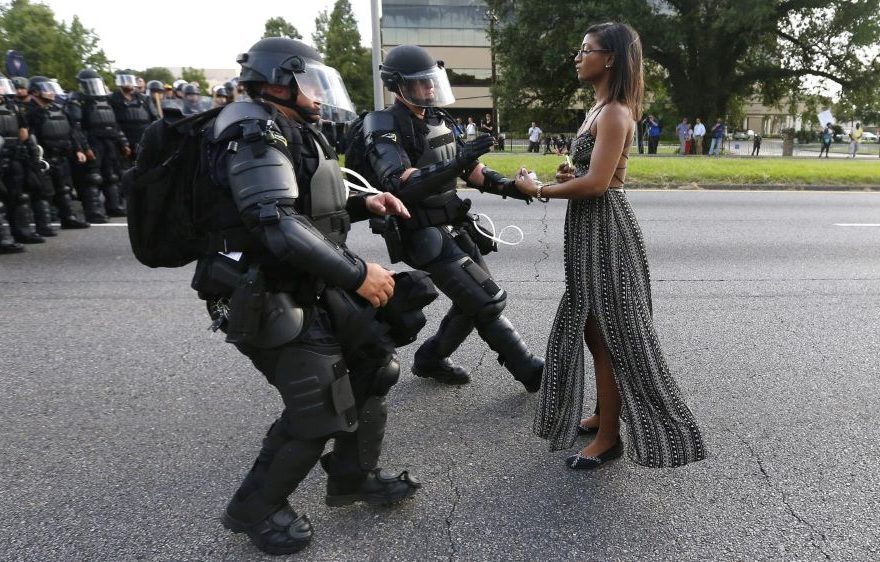March is Women’s History Month. I am always conflicted about it. It follows Black History Month and there’s a natural angst because I rarely see feminists highlight the contributions of women of color.
Every election cycle there is an interesting spectacle of candidates who claim to be allies interact with communities of color while courting the vote. It illustrates my frustration with being a black woman and dealing with white feminists who use words like ally, lean in or partner, but are nowhere to be found for issues that affect our communities until they need our vote.
When we mention the disparity of this exchange, we get “Hillaryed” or “Bloomberged” – yeah I know that I have done some things that hurt your community, but you don’t want “so and so” in office so forgive my “super predator” comment or “stop and frisk” policies or Biden’s fabricated civil rights involvement and Mandela association and let’s rally together to save democracy. Or we get Buttegieg, who was not concerned about the black vote as mayor of South Bend, but as a presidential candidate tries to cast our dislike for him as homophobic.
Some white male associates who consider themselves enlightened or liberal commented that they would be willing to set aside values and work for Trump or his associates for the right price. Maybe this was in jest (side-eye). It was a reminder that 53% of white women voted for Trump and that is why we are where we are today. Happy Women’s History Month!
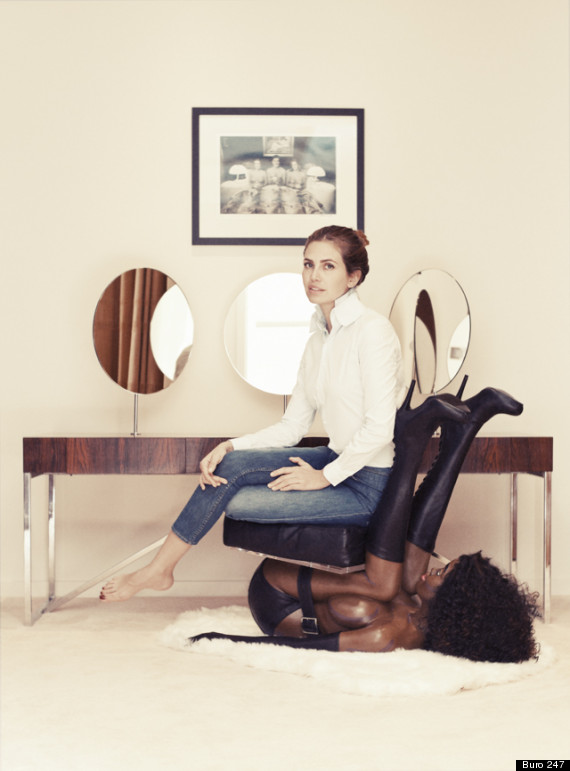
Dasha Zhukova in 2014 photoshoot with Buro 24/7
Thank goodness for bodacious Rihanna. Bad Girl RiRi (as she is known) is not only a fashion and beauty mogul, and songstress, but is also a philanthropist championing equal rights worldwide. She was honored at the NAACP Image Awards.
Fans hoped she would surprise with album or a song. Instead, in true black girl magic fashion, RiRi dropped some pearls of wisdom and issued an ultimatum for those that admire black culture, ingenuity, and innovation – as the culture says white folks “love our rhythm but don’t want our blues.”
Rihanna asked the NAACP audience, “How many of us have colleagues, partners, and friends from other races, sexes, and religions…who want to break bread with you? They like you? Well then this is their problem too! So when we’re marching and protesting about Michael Brown Jr and Atatiana Jefferson of the world…Tell your friends to pull up.” Her clarion call was like Dr. Martin Luther King Jr.’s frustration with the white moderate in his Letter from a Birmingham Jail.
First, I must confess that over the past few years I have been gravely disappointed with the white moderate. I have almost reached the regrettable conclusion that the Negro’s great stumbling block in his stride toward freedom is not the White Citizen’s Council-er or the Ku Klux Klanner, but the white moderate, who is more devoted to “order” than to justice; who prefers a negative peace which is the absence of tension to a positive peace which is the presence of justice; who constantly says: “I agree with you in the goal you seek, but I cannot agree with your methods of direct action”; who paternalistically believes he can set the timetable for another man’s freedom; who lives by a mythical concept of time and who constantly advises the Negro to wait for a “more convenient season.” Shallow understanding from people of good will is more frustrating than absolute misunderstanding from people of ill will. Lukewarm acceptance is much more bewildering than outright rejection. – Dr. Martin Luther King Jr.
I wonder if Heather Heyer was not a white woman whether the outcry to Trump’s stance on Charlottesville would have been as loud from white Americans.
Women’s Rights & Gay Rights – History of Exclusion
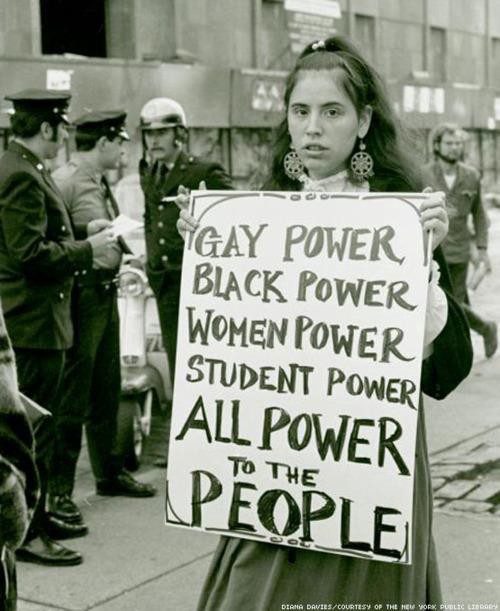
All Power to the People. Credit: Diana Davies/New York Public Library
Women’s rights ran on the coattails of Civil Rights. Gay rights were shouldered in large part by black and brown trans people. Yet, in both movements you are hard pressed to see black and brown faces represented in leadership or honored for the sacrifices and contributions to the movement.
The Women’s Right movement in America has been tied to the emancipation of blacks and Civil Rights. To defeat talks of emancipation or dismantling “separate but equal” policies, politicians would tack on a women’s right provision as a prerequisite or negotiating point. Therefore, it typically pitted women’s rights against equality for blacks.
Unfortunately, equality for women did not necessarily translate into equality for women of color, especially black women. As noted by Becky Little, Susan B. Anthony and Elizabeth Cady Stanton were members of the American Equal Rights Association (AERA) along with Frederick Douglass and black women to secure the vote for women and blacks.
However, “AERA dissolved over heated fights about whether to support the 15th Amendment with which black men won the right to vote. Douglass argued that AERA should support the amendment while continuing to fight for women’s suffrage. Stanton not only disagreed, she gave an address filled with racist stereotypes about male immigrants and former male slaves whom the amendment would enfranchise.”
In How Early Suffragists Sold Out Black Women it highlights the history of the women’s movement as one supporting racism to achieve its goal of the vote or equality for white women, not all women. Unfortunately, this disparity exists today within the movement.
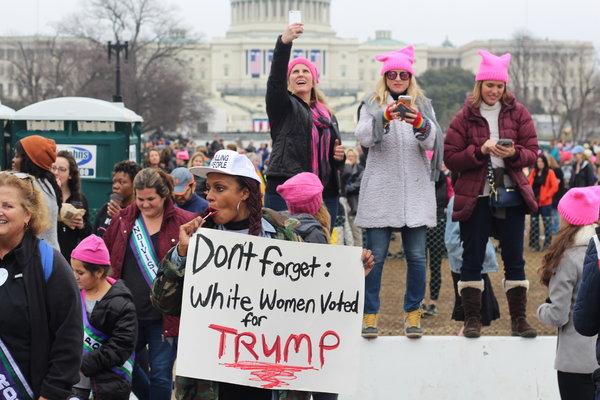
Angela Peoples
You cannot talk about PRIDE, the Stonewall riots or gay rights without mentioning black and brown activists. Everything people love about gay culture stems from the black and brown trans community – shade, read, vogueing all comes from Paris is Burning and Jewel’s Catch One.
Where is black and brown representation in mainstream LGBTQ organizations, leadership, media and television? Where are the roses for Tracey Norman? Where are the accolades for living legend André Leon Talley, whose contribution to fashion are iconic and did so as a black gay man during segregation!
Last year, a black trans woman tried to bring attention to murdered black trans women at a Stonewall celebration at a gay bar and was shut down. She was eventually heard, but seriously the irony that Stonewall started because of a black trans woman and in 2019 a black trans woman was heckled at a gay bar celebrating Stonewall.
As Nic Kay stated regarding a Chicago PRIDE protest, “I’m not here to rain on anybody’s parade, but I think there’s room within celebrations to always remember the struggle. There is room for both, to celebrate where we have come from but to center the urgent issues.”
The reality remains that just as black women do not enjoy the same rights and privileges as white women, so too black and brown LGBTQ people do not enjoy the same rights and privileges as white LGBTQ communities.
POLITICS LAW & ORDER
Black women have been saving America and democracy from its self-destructive ways, but a seat at the power table is elusive.
Where are all these allies, partners, and women networks when black lives are on the line protesting police brutality and over-policing?
DNC Chair Tom Perez acknowledged, “Black women are the backbone of the Democratic Party, and we can’t take that for granted.” But you do. You want us to rally around Hillary and white candidates, but fail to honor and support trailblazers like Shirley Chisholm and Dolores Huerta or their current incarnations in Maxine Waters, Alexandria Ocasio-Cortez (AOC), Ilhan Omar, and Ayanna Pressley.
Mention those names and white people talk about how they don’t fully agree with everything Maxine, AOC or Ilhan say. Well, people of color don’t fully agree with how the DNC or white candidates treats us but that doesn’t stop white feminists and liberals from urging us to band together for the greater good.
In 2008, Hillary warned us not to vote for Obama just because he’s black. Yet in 2016, a woman that didn’t vote for Hillary had a special place in hell. The hypocrisy is amazing.
In January, young climate change activists met at Davos along with Greta Thunberg to speak. Afterwards, a photo was taken of the young ladies. When the Associated Press released the photo, it cropped out the only black activist, Vanessa Nakate from Uganda.
Thunberg commented, “This Friday 5 representatives from Fridays For Future held a press conference in Davos. A news agency chose to edit the picture like above, cutting out @vanessanakate1 from the picture. This is totally unacceptable in so many ways. Like Vanessa said herself: “You didn’t just erase a photo. You erased a continent.”
Jamie Margolin said, “Racism, classism and the erasure of marginalized voices isn’t new. A photo crop-out is an easy way to describe it, but it’s really a metaphorical crop-out from the narrative of climate science in general.”
Likewise, that is what white feminists and LGBTQ do – “crop-out from the narrative” stories, voices, and contributions of black and brown communities as if the gains for women’s and gay rights existed without us. It reminds me of how white nationalists wrap themselves in the flag and “patriotism” when black folk been fighting and dying in every American war since the Revolution, even though those inalienable rights are still not enjoyed by us equally.
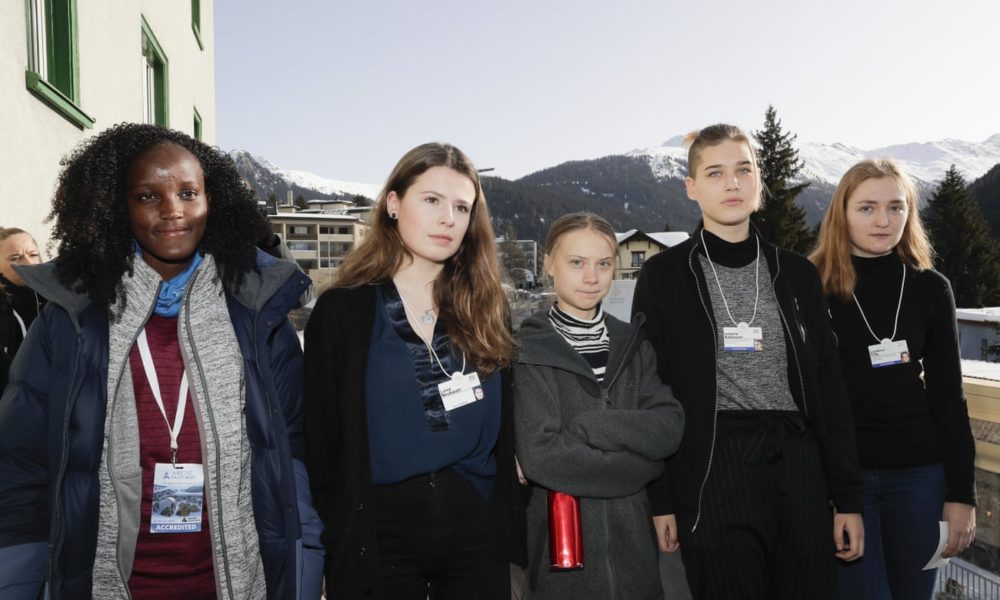
Vanessa Nakate along with Greta Thunberg at Davos. Photo Credit AP
More than 60% of missing girls and women are women of color, but only 5% of those cases are investigated. The media covers missing white girls but not missing girls of color.
A study showed that by the age of 5 black girls are already viewed as “less innocent than their peers.” I believe part of this is steeped in slave narratives of black women as sexual savages – justification for assaulting slave girls and women as it was not considered rape if the woman was black (free or enslaved). From there the notion that black girls are naturally “fast.”
In July, ABC Nightly News did a small story. Yet, the number of missing girls of color is growing, especially in Native American communities. Where is the outrage among feminists? Where are our allies demanding justice and resources for these girls of color?
The number of missing black and brown trans women is high. Regardless of your religious or personal feelings about LGBTQ people, no one should be beaten and killed.
Unfortunately, black and brown trans women are targeted in higher numbers within the LGBTQ community. My aunt identified as a butch lesbian. I heard how people not only would attack her, but also her children because she was a lesbian.
I lived in Chicago where Howard Brown is renowned for its services to LGBTQ community. A few years ago there was backlash when black and brown LGBTQ kids started hanging around the Center on Halsted and complaints about them being loud and disturbing neighbors.
These kids for whatever reason cannot go home or do not have a home. First, teenagers in general are loud and obnoxious by nature. Second, these teenagers are part of your supposed mission and community outreach. That may require some cultural understanding on both sides, but don’t be dismissive of them as those loud black and brown queer teenagers. It was partly because of this that black queer activists disrupted the Chicago Gay Pride Parade in 2015.
HEALTHCARE & MEDICINE
When the crack epidemic hit urban black and brown communities, build more prisons and harsher sentencing was the remedy.
Prisons are big business and business is booming incarcerating black people twenty percent longer for the same crime as a white person.
When the opioid epidemic hit white suburbia, all of a sudden we should not put users and addicts behind bars but seek rehabilitation. Do you know why 80% of the opioid crisis is in the white community?
During slavery, white doctors operated on black female slaves (Anarcha, Betsey and Lucy) without anesthesia — a gift to science from slave masters. “Medical” conclusions were made about the different “biology” between white and black patients.
Those stereotypes exist in modern medicine today where a study showed that some “white medical students and residents endorsed false beliefs about biological differences between blacks and whites. And those who did also perceived blacks as feeling less pain than whites and were more likely to suggest inappropriate medical treatment for black patients.”
But how does that affect the opioid crisis today?
Studies revealed, “There is a bias issue there in terms of either believing [minorities are] more likely to be substance abusers or they can endure more pain,” said Kenneth Leonard, the director of the Clinical and Research Institute on Addictions at the University of Buffalo. Indeed, a large body of research on racial equality in health care shows medical professionals hold falsehoods about the biological contrasts between patients of color and whites. Those viewpoints can perpetuate racial bias in the perception and treatment of non-white patients. These falsehoods can result in discrimination when dealing with pain treatment, with doctors overprescribing medication to whites and under-prescribing to non-whites.”
So racism prevented the opioid crisis from spreading as widely in black and brown communities. Yet that same racism is the reason why infant mortality, complications during childbirth and cancer is higher among black and brown women.
Unequal medical treatment for women of color is the norm, even if you’re tennis champion Serena Williams, who almost died of complications from childbirth because her concerns were not heeded.
In black and brown LGBTQ communities, access to HIV health and preventative care like PReP is not the same. Kellan Baker, a senior fellow for the LGBT Research and Communications Project at the Center for American Progress, noted: “Communities of color face this health disparity to a greater degree, and this doesn’t mean a group of people are innately sick, but that discrimination makes us sick, and systems are set up to discriminate. Health disparities are avoidable differences that could be solved if we distributed resources differently or had a different understanding or how people’s lives matter equally.”
Separate but equal is an unhidden theme when it comes to feminism and LGBTQ communities. If you were not aware, now that you know, what are you going to do to end the disparity?
ARTS & ENTERTAINMENT
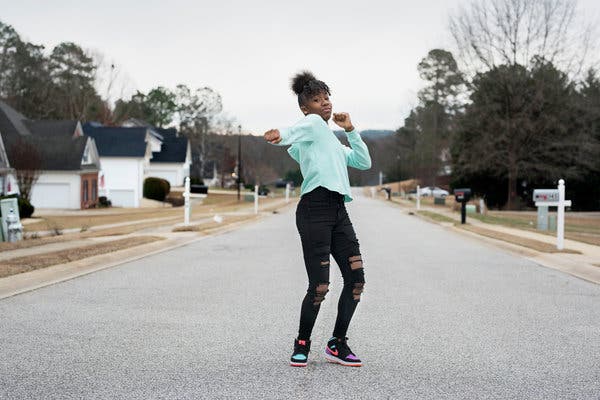
Jalaiah Harmon, creator of Renegade dance
Recently, what appeared to be a rather innocuous event happened, the Renegade dance craze. The dance is to the song Lottery. It went viral due to the choreography of a 14-year old black girl. Yet, for months she was not credited for the dance.
However, two white girls, social media “influencers” benefited from being associated with the dance. When the original creator, Jalaiah Harmon, was finally credited, the social media influencers backtracked. They said they did not create it but were influenced or inspired by Jalaiah.
Why am I tripping over a dance craze?
Because it’s endemic of the problem that exists between white women and women of color. It harkens back to Kirsten Dunst’s character in Bring It On being offended for being caught stealing cheers from the black team.
Everyone understands going viral has monetary and other benefits attached to it. Careers have been launched from a viral moment. Jalaiah is a dancer (ballet, contemporary, and hip-hop) who practices her craft and spent time developing that choreography on Dubsmash, an app predominantly used by black creatives, only to have it copied and reposted on TikTok (a more mainstream app) by two girls who profited from it.
Sounds like Elvis co-opting Hound Dog from Big Mama Thornton to me.
People say it is okay appreciate, imitate or be inspired by black culture, but when black people demand credit for our work and talent, we’re suddenly the problem. Comedian DL Hughley said, “Isn’t it funny how black people were characterized as lazy once their labor was no longer free via slavery?” Funny indeed.
White social media influencers pretending to be mixed race or black is a thing — blackfishing. Yet, these same people are not seen promoting social justice issues that affect women of color.
Imitation is not the sincerest form of flattery when you use it for self-promotion and monetary gain but the person, people, women you are imitating are still objectified and vilified for what you have made “mainstream.”
Black people wearing their natural hair at school and in the workplace is controversial, but when a white woman gets cornrows and locs, it’s cool and trendy.
WHERE DO WE GO FROM HERE? WHAT NOW?

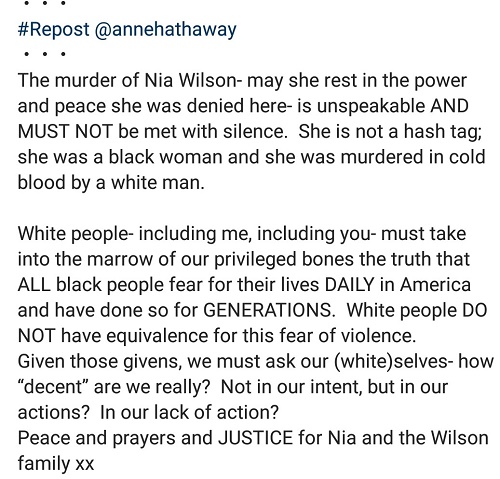
Rihanna’s NAACP Image Award speech concluded with “we can only fix the world together. We can’t do it divided.”
What deemed the Black Panther party as dangerous in the eyes of the FBI was its ability to build coalitions across races including poor whites.
Steven Sapp noted, “Fred Hampton’s Rainbow Coalition, consist[ed] of the Black Panthers, Young Lords, Young Patriots, members of the American Indian Movement, Brown Berets, I Wor Kuen, and even the White Panther Party. It is important for us to see this type of unity that existed then and should continue now. It is this type of effort that should cross color lines, to show that liberation is a human struggle that can crush white supremacy and will fight it as a coalition.”
Anne Hathaway addressed this after the death of Nia Wilson.
In his BAFTA acceptance speech, Joaquin Phoenix summed it up: “I think it is the obligation of the people who have created perpetuated and benefitted from the systems of oppression to dismantle it.”
